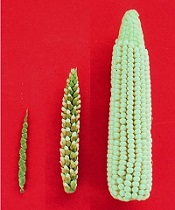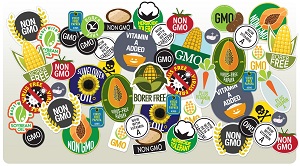| July 22, 2015 | |||||
 |
 |
 |
 | |||||||||||
| Society News GSA President Jasper Rine and Executive Director Adam Fagen have authored a Commentary in GENETICS analyzing a recent GSA member survey on federal research support at the level of individual PIs. Many get by on relatively small amounts of extramural research support, and most have experienced some sort of gap in their funding over the last five or ten years. Read the Early Online version of the Commentary and let us know your perspective at the Genes to Genomes blog. Check out essays from the 2015 winners of the Genetics Society of America Awards in the July issue of GENETICS! The awardees share inspiration, observations, and predictions about their fields:
The GSA Journals
Tracey DePellegrin, Executive Editor of the GSA journals, was interviewed in Digital Science’s Altmetric blog about GSA’s implementation of Altmetrics on the GENETICS and G3 journal websites—and other ways to look at impact of published scholarship. Did you know that all GENETICS and G3 editors making decisions on your paper are practicing scientists? When our editors write a decision letter, they strive to offer clear direction on next steps, as well as specifics on exactly what parts of the reviews you need to address. Reviewers offer excellent recommendations, but it’s the editors who make the final decisions on your paper, or talk with you when you have questions. We call this peer-editing. It also means that resubmissions and revisions are less likely to go out for re-review, because we encourage editors to make decisions based on the author’s response to the reviewers and editor.
 The beauty and humor of the worm: Many scientific meetings host famous speakers, inspire advances, and provide important networking opportunities. The International C. elegans Meeting also embraces two unusual conference activities: the Worm Art Show and Worm Comedy/Variety Show. Get the inside scoop from guest authors Diana Chu and Ahna Skop and see the winners of this year’s Art Show. Tips for scientists talking to the media: For scientists, talking to reporters can be exciting, intimidating, powerful, or frustrating, and often a combination of all the above. Read tips on engaging the media from guest author Robin Bisson, Director of the Genetic Expert News Service(GENeS). Read more. A genomic balancing act: Allelic expression in the mouse genome is surprisingly unbalanced, according to new research published in the June issue of GENETICS. Depending on the level of genetic diversity, about 20% of the mouse genome can be preferentially expressed from one allele over the other. Read more about the study in Sarah Bay’s first post at Genes to Genomes. Members in the News Former GSA president Cynthia Kenyon and former GSA Trainee Board representative Kathleen Dumas are featured in a piece on research at the Buck Institute for Research on Aging in Novato, California. In a companion article, Gordon Lithgow, a GSA member also from the Buck Institute, received press for his research on the links between stress and longevity. Congratulations to GSA members Lacy Barton (New York University School of Medicine), Gina Caldas (University of Massachusetts Medical School), and Tera Levin (Fred Hutchinson Cancer Research Center), who have been named by the Damon Ruyon Cancer Research Foundation as Damon Runyon Fellows. The recipients of this prestigious, four-year award are outstanding postdoctoral scientists conducting basic and translational cancer research in the laboratories of leading senior investigators across the country. [more…] |
Included in this Issue:
| ||||||||||
Education
and Professional Development
Scientific collaboration is becoming increasingly important, so learning how to be an effective collaborator is not just important for the group, it’s important for individual professional success. Nature Jobs explores the key ingredients for building a strong team and discusses how to prevent fallout among collaborators. Research underscores the need to utilize active learning in the classroom, yet it can be a challenge to convince undergraduate instructors to do so. GSA members Bill Wood (University of Colorado) and Jeff Leips (University of Maryland, Baltimore County) are among the experts cited in a Nature Jobs article about this issue. Are you a graduate student or postdoc interested in a career outside of academia? We have a resource for you! A group of graduate students and postdocs at the University of Michigan have created a useful guide for students and postdocs interested in pursuing careers outside of academia. The Active Career Exploration (ACE) plan for career development helps students and postdocs to learn about career tracks they can pursue and ways to cultivate relationships with people working in those positions. ACE provides time-bound, concrete steps that have proven effective. Funding, Fellowships, and Awards NIH's National Institute of Neurological Disorders and Stroke (NINDS) has issued a request for applications for its new Research Program Award (RPA), which is designed to provide longer-term support and increased flexibility to investigators conducting neuroscience-related research. An RPA will generally support all NINDS-related research in a laboratory with up to $750,000 per year in direct costs for up to eight years. Although applicants must have had at least four years of R01 (or equivalent) support, the program is not limited to senior investigators. NINDS is strongly encouraging investigators to submit a letter of intent by September 6. The application deadline is October 6, 2015. PIs may submit a competitive renewal R01 application and RPA application in parallel. [more…] The National Science Foundation has issued a revised program solicitation for the Collections in Support of Biological Research (CSBR) program. Applications can request support for living stock collections, natural history collections, and transferring the ownership of existing collections. The full proposal deadline is September 10, 2015. Policy
The directors of the White House Office of Management and Budget (OMB) and Office of Science and Technology Policy (OSTP), Shaun Donovan and John Holdren, have distributed their annual memorandum on science and technology priorities for the fiscal year (FY) 2017 budget. Included in these priorities is federal government funding for basic research, described as "the fundamental, curiosity-driven inquiry that is a hallmark of the American research enterprise and a powerful driver of new technology." The memo to the heads of Executive Departments and Agencies is used to help align agency budgets. Requests consistent with the elements in the memo "are more more likely to be prioritized in FY 2017 Budget deliberations." [more…] NIH has provided updated information on its new Genomic Data Sharing policy including an overview slide presentation and a new set of Frequently Asked Questions. Community Announcements The Federation of American Societies for Experimental Biology (FASEB) has launched its fourth annual BioArt competition. FASEB aims to share the beauty and excitement of biological research with the public through this competition by displaying images that are rarely seen outside of the laboratory. Winning images will be selected from two categories: “Fluorescence and Electron Microscopy” and “All Other Life Science Images”. Two video winners will also be chosen. Last year’s winning BioArt images are on display at the National Institutes of Health’s visitor center. Entries will be accepted through August 31, 2015. And finally... Thanks for helping us reach 4,500 likes on Facebook and 5,900 followers on Twitter! Keep up with highlights like these by joining GSA on Facebook, Twitter, LinkedIn, and Google+:
|
|||||||||||
| Do you have a brief announcement to submit to GSA
e-News? e-News items include news about GSA members – new positions, book publication, awards or grants received and obits; short policy items; brief research news items and grant programs; and, award nomination announcements. Deadline for next issue: July 31, 2015. Send items (and feedback) to Beth Ruedi, eruedi@genetics-gsa.org. | |||||||||||







